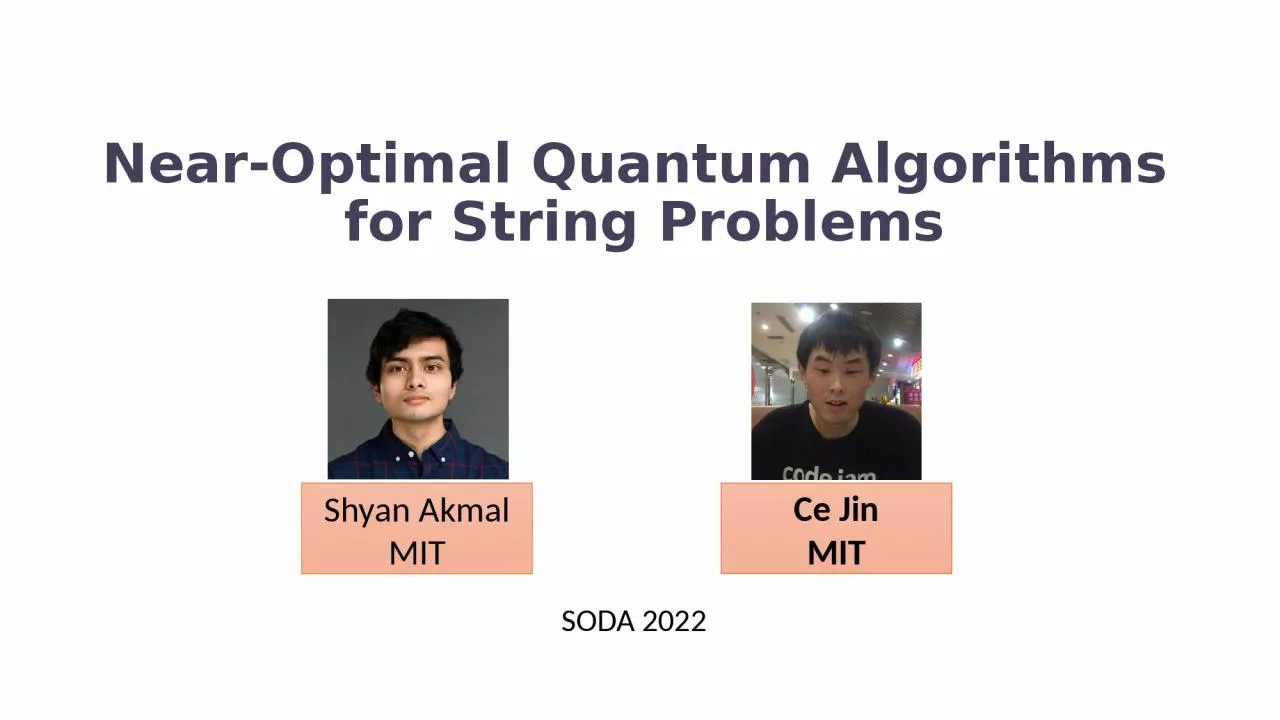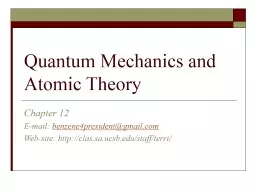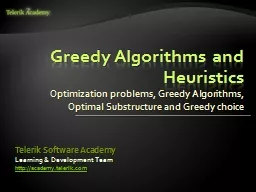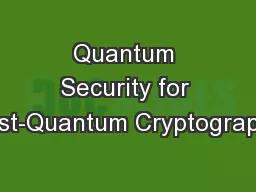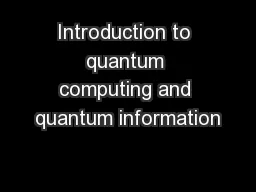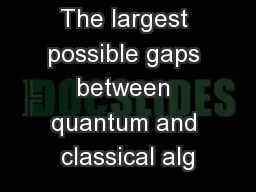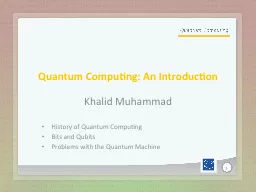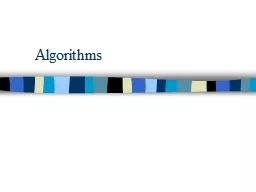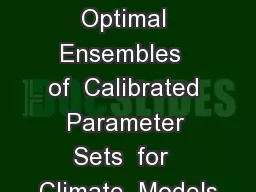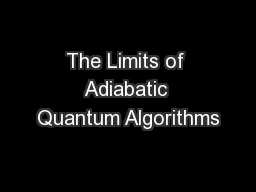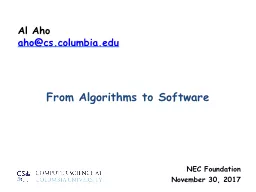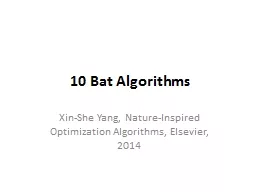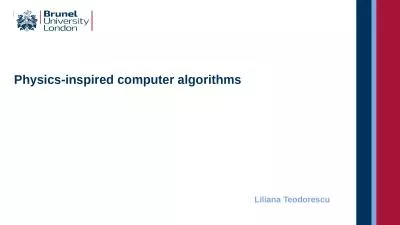PPT-Near-Optimal Quantum Algorithms
Author : jasmine | Published Date : 2023-07-23
for String Problems SODA 2022 Shyan Akmal MIT Ce Jin MIT Basic Problems in Stringology Exact Pattern Matching Longest Common Substring Lexicographically Minimal
Presentation Embed Code
Download Presentation
Download Presentation The PPT/PDF document "Near-Optimal Quantum Algorithms" is the property of its rightful owner. Permission is granted to download and print the materials on this website for personal, non-commercial use only, and to display it on your personal computer provided you do not modify the materials and that you retain all copyright notices contained in the materials. By downloading content from our website, you accept the terms of this agreement.
Near-Optimal Quantum Algorithms: Transcript
Download Rules Of Document
"Near-Optimal Quantum Algorithms"The content belongs to its owner. You may download and print it for personal use, without modification, and keep all copyright notices. By downloading, you agree to these terms.
Related Documents

